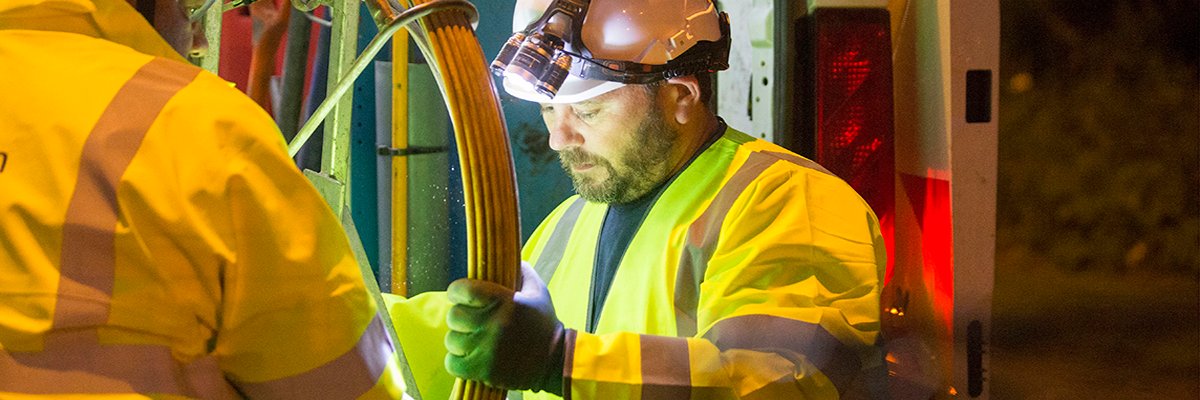The UK government’s stated aim to roll out gigabit broadband across 85% of the UK by 2025 has been declared unrealistic in a withering report by Parliament’s Digital, Culture, Media and Sport (DCMS) Committee.
The committee also looked at what role 5G technology might play in national infrastructure and called the government’s target for majority 5G coverage by 2027 equally ambitious, especially following recent rulings on the use of equipment from high-risk suppliers, specifically removing Huawei technology from national infrastructures.
The DCMS Committee report on broadband and the road to 5G is the result of an inquiry examining the government’s pledge to ensure that every home and business in the UK has gigabit-capable broadband by 2025.
Just after the Conservatives’ General Election victory in December 2019, the government outlined plans to make good on prime minister Boris Johnson’s pledge to work towards “delivering full-fibre [broadband] to every home in the land” by 2025, and at the Conservative Party conference in October 2019, then chancellor Sajid Javid committed £5bn of public funding to “support the roll-out of full-fibre, 5G and other gigabit-capable networks to the hardest-to-reach 20% of the country”.
In his first Budget statement in March 2020, chancellor Rishi Sunak announced that the government would fulfil its promise to make funding available for a gigabit broadband roll-out across the UK, especially in the so-called hardest-to-reach parts of England, Scotland, Wales and Northern Ireland. Yet even after the Covid-19 pandemic has battered the economy, the UK’s broadband industry has remained one of the few bright lights and infrastructure development has carried on apace.
Just days ago, a report from telecoms regulator Ofcom noted that despite worries that the UK’s communications infrastructure could not cope with the extra strain from millions of displaced workers using their home networks for work as well as entertainment, fixed and mobile networks have generally coped well with demands, and in the meantime, gigabit connections have increased markedly.
However, this came just after the UK government began backtracking on its ambitious targets. When announcing his Spending Review in November 2020, Sunak promised to build a “stronger future” and transform the country’s infrastructure, but also confirmed that the 2025 target for roll-out had been downgraded to 85% coverage by 2025 and the original commitment to provide £5bn of public funding for hard-to-reach areas had been reduced.
In the light of these moves, the DCMS committee considered evidence on how realistic the government’s ambition was, what would be needed to achieve it, and what the government’s target would mean for businesses and consumers.
Even though the committee recognised that the Covid-19 pandemic had also put enormous pressure on public finances, it said it was “nonetheless a surprise” when the government abandoned its commitment to nationwide gigabit-capable broadband by 2025 in the National Infrastructure Strategy, and set out, in the Spending Review, plans to distribute only 25% of the £5bn it had committed for gigabit-capable broadband.
It said the government’s decision to revise the target down to 85%, just weeks after MPs had been reassured of the commitment to it, was a belated recognition that it was unrealistic.
The report added: “Even meeting the revised target will be a challenge, as it still requires industry to roll out infrastructure at considerable pace. As views differ on the technologies that should be used to deliver gigabit-capable broadband, the government must clarify its plans for delivering its targets, updating us on progress over the coming years, and explain what the severe reduction in funding for infrastructure will mean and when it expects the remaining 15% of premises to be served with gigabit-capable broadband.”
In addition to full-fibre, the report investigated mobile, looking at what initiatives such as the Shared Rural Network could mean for improving mobile connectivity across the UK, as well as the impact of Covid-19 on the roll-out of 5G infrastructure. It warned there was a risk that the industry’s roll-out of 5G technology would repeat the legacy of mobile “not-spots”.
In conclusion, the DCMS committee warned that it was clear the government and Ofcom needed to take bolder, faster action to address the causes of costs and delays to the infrastructure roll-out. It advised its own department to finalise and launch the contracts for delivering infrastructure to hard-to-reach properties as soon as possible and, as it finalised its regulation of the wholesale fixed telecoms market, it called on the regulator to address concerns about competition and the market dominance of BT broadband provision division Openreach.
The committee said the scale of the government’s legislative measures did not currently match the scale of its ambition for gigabit connectivity and urged the government to reform the wayleave regime for telecoms infrastructure to address issues with unresponsive and/or uncooperative landlords, and urgently address the lack of sufficient skilled engineers to complete this work over the next four years.











/https://specials-images.forbesimg.com/imageserve/5f59eab96770953a83c43303/0x0.jpg)
